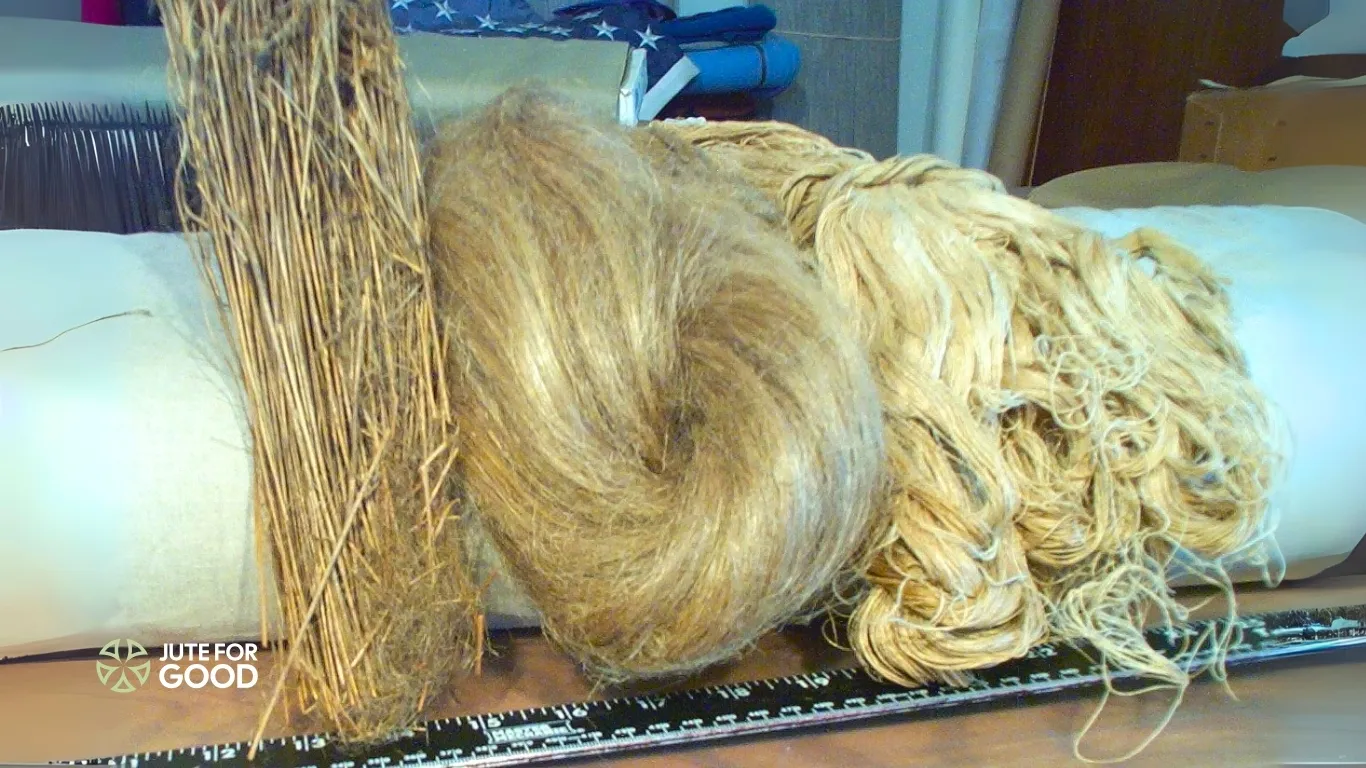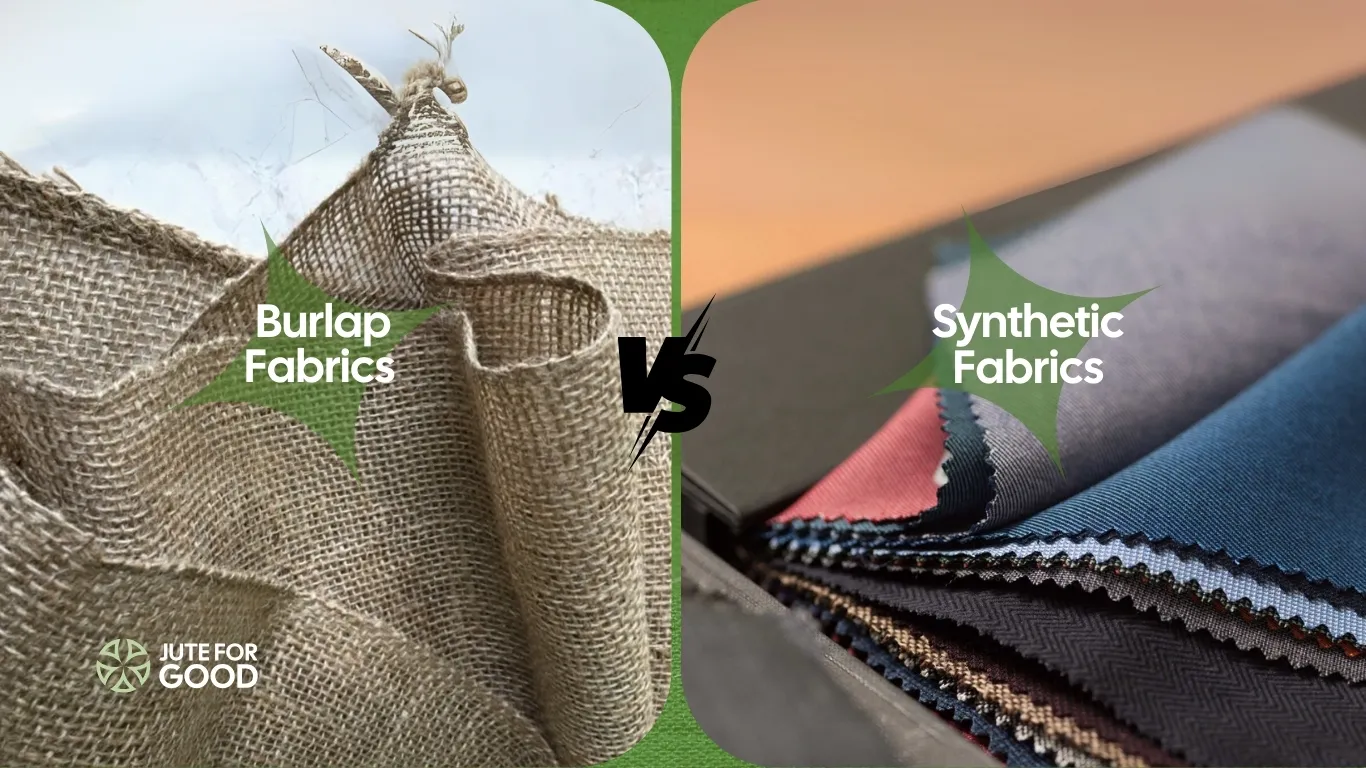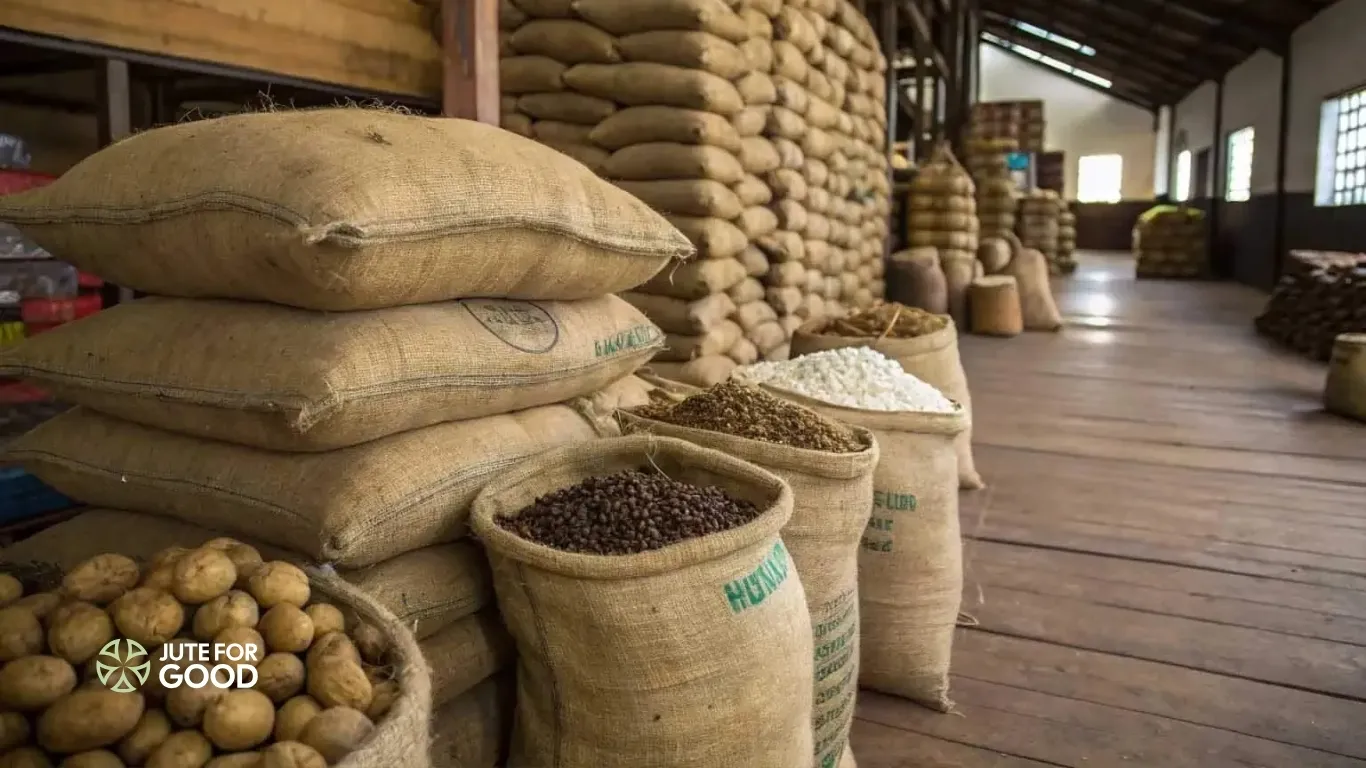Burlap is a fabric people often see in gardens, packaging, or rustic decorations. It looks rough, has a natural brown color, and feels eco-friendly. But many still ask, is burlap really biodegradable? The answer is yes, but it depends on how the burlap was made and where it ends up after use.
In this blog, we will look at the science behind burlap’s decomposition, how long it takes to break down, and what makes it safe or unsafe for the environment.
What Is Burlap Made Of?
Burlap is usually made from jute, a plant fiber grown mainly in Bangladesh and India. Sometimes, hemp or flax is used. These fibers are spun into strong threads and then woven into a coarse fabric. That’s the simple, natural form of burlap.

But not all burlap you see is 100% natural. Some modern products mix jute with synthetic fibers like polyester or nylon. Others may have chemical coatings to make the fabric fire-resistant or waterproof. These versions do not break down the same way as natural burlap.
So, before deciding if burlap is biodegradable, it’s important to know its source and treatment.
What Does “Biodegradable” Really Mean?
The word biodegradable means something can be broken down naturally by tiny living things in soil or water. These include bacteria, fungi, and other microbes. Over time, they eat away at the material, turning it into natural elements like carbon dioxide, water, and biomass.
But people often confuse this with other eco-friendly terms:
- Biodegradable: breaks down naturally but may take different lengths of time.
- Compostable: breaks down into safe, useful matter for soil in a short time (under controlled conditions).
- Recyclable: processed again to make new products.
Burlap fits in the biodegradable group when it’s made from untreated natural fibers. If it is blended or chemically coated, it may not decompose fully or may release harmful residues.
The Science of Burlap Decomposition
Natural jute burlap breaks down the way plant matter does. Microbes in soil and water attack the fiber’s cellulose and lignin. This process is similar to how leaves or wood chips rot over time.
How long does it take? That depends:
- In moist soil with good microbes, burlap can decompose in a few months.
- In dry or cold areas, it may take up to 2 years.
- In water, the fabric softens and breaks down faster.
Several factors affect burlap’s decomposition speed:
- Moisture: Wet burlap breaks down faster than dry burlap.
- Sunlight and air: Exposure to light and oxygen helps microbes grow.
- Temperature: Warm conditions speed up the process.
- Soil type: Rich soil with many microbes works faster than poor soil.
- Fabric thickness: Thick burlap takes longer to vanish than thin sheets.
This is why gardeners often prefer burlap, it does its job and then returns safely to nature.
Burlap vs Synthetic Fabrics

Plastic fabrics like polyester or nylon may look strong, but they stay in the environment for hundreds of years. They don’t break down into soil. Instead, they turn into microplastics that pollute water, land, and even food chains.
Burlap, on the other hand, is plant-based. When it’s natural, it goes back to the earth like dried leaves or wood. This makes it far safer for the environment.
But there’s a catch. Not all burlap is pure. Some products are blended with synthetic threads for extra strength. Others are treated with chemicals to make them waterproof, flame-resistant, or brightly dyed. These versions lose their eco-friendly quality and act more like plastic than natural fiber.
Can Burlap Be Composted?
Yes, burlap can be composted if it’s natural and untreated. In fact, many gardeners use it in their compost piles. It adds bulk and acts like a “brown” material, balancing out food scraps and other “greens.”
Here’s how to compost burlap:
- Check the fabric: Make sure there are no chemical coatings or plastic fibers.
- Cut it up: Small pieces break down faster than large sheets.
- Mix with other compost matter: Balance it with kitchen waste, leaves, or grass clippings.
- Keep the pile moist: Microbes need water to work.
- Turn the pile often: This adds air and speeds up decomposition.
Within months, burlap pieces turn into rich compost that improves soil health.
When Burlap Is Not Eco-Friendly
While burlap has a strong green image, not all products deserve it. Here are a few cases where burlap may not be safe for the environment:
- Synthetic blends: If polyester or nylon is mixed in, it won’t fully decompose.
- Chemical treatments: Waterproof or fire-retardant coatings leave behind residues.
- Heavy dyes: Bright decorative burlap may contain harmful colorants.
This is why eco-conscious buyers should choose plain, untreated burlap. A simple check is to burn a small piece safely: natural burlap smells like burning paper or wood, while synthetic blends melt like plastic.
Practical Uses of Biodegradable Burlap

Natural burlap is not only biodegradable but also very useful. People around the world use it in many eco-friendly ways:
1. Gardening
- Weed barrier: Burlap sheets block sunlight, stopping weeds while letting soil breathe.
- Plant protection: It shields young plants from frost or strong sun.
- Erosion control: Farmers and landscapers place burlap on slopes to stop soil from washing away.
2. Packaging
- Eco bags: Burlap sacks carry rice, coffee, or grains without adding plastic waste.
- Gift wrapping: It gives a rustic, natural touch for special events.
3. Crafts and Décor
- Rustic weddings often use burlap table runners, bows, or banners.
- DIY lovers create storage baskets, wall art, and cushion covers from old burlap.
4. Disposal Tips
To keep burlap eco-friendly, it should be:
- Reused as much as possible.
- Cut into smaller pieces before composting.
- Kept away from chemicals that may affect decomposition.
Frequently Asked Questions
1. How long does it take burlap to decompose in soil?
It usually takes between 3 months and 2 years. Thin, untreated burlap in warm and moist soil breaks down within a season. But thick or tightly woven burlap in cold or dry areas may last much longer. The presence of microbes, moisture, and oxygen makes the biggest difference.
2. Can I put burlap in my compost bin?
Yes, you can compost natural burlap. Just make sure it has no plastic fibers, wax, or chemical coatings. Cut it into small pieces so microbes can work faster. Over time, it adds carbon-rich matter to your compost pile and helps create balanced, healthy soil.
3. Is burlap safe for vegetable gardens?
Yes, plain burlap is safe for growing food. Gardeners often use it as a weed barrier, mulch cover, or frost blanket. But if the fabric is dyed or treated with chemicals, avoid using it near vegetables, because toxins may leach into the soil.
4. What’s the difference between burlap and hessian?
There is no real difference. Both words describe the same coarse fabric made from jute or hemp. “Burlap” is the name used in North America, while “hessian” is more common in Europe, Asia, and Australia.
5. Does dyed burlap decompose?
Yes, but the type of dye matters. Burlap with natural, plant-based dyes will break down safely. On the other hand, synthetic dyes can slow the process and sometimes release harmful chemicals. If you are composting, choose undyed or naturally dyed burlap for best results.
Conclusion
Burlap is a fabric with real eco value, but only when it is made from natural jute, hemp, or flax without synthetic blends or chemical coatings. In that form, it is biodegradable and returns to the earth like any other plant matter.
The science of its decomposition shows that microbes in soil and water can break burlap down within months to a couple of years. This makes it far safer than plastics, which remain for centuries.
Still, not all burlap is the same. Treated or blended versions may harm the environment. That is why buyers should always check for plain, untreated burlap if they want a sustainable choice.
In daily life, biodegradable burlap can be reused in gardening, packaging, crafts, and more. And when it reaches the end of its use, composting is the best way to give it back to nature.
So, is burlap truly biodegradable?
Yes but only when it is natural and pure. Choosing the right kind of burlap helps reduce waste, protect soil, and support a greener future.
